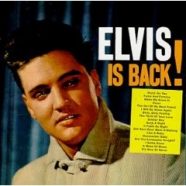
A lot happened in 1969 – the moon landing, Woodstock, the grisly Manson murders, the Stonewall uprising, etc. Perhaps less noteworthy, yet significant for a city known for entertainment, was Elvis Presley’s comeback 50 years ago at the International Hotel in Las Vegas. After a decade of artistic doldrums, boring movies and no live performances, he returned to the stage on July 31, 1969 with a memorable 4 week performance that not only reinvented his career, but re-branded Las Vegas. For strategic marketers, this experience provides some good lessons for successful re-branding.
In the 1950’s Elvis was the “king of rock’n’roll”. His edgy, throbbing shakes on stage and soulful blend of hard rock, country and R&B became legendary and inspired artists around the world, including the Beatles. Elvis’s performances were dynamic and engaging, exciting screaming teenagers all over the world who were totally absorbed by this newfangled music.
When Elvis returned from the army in 1960 however, he confined himself to making silly movies and disposable pop songs that never even reached the charts. This decade became a “black hole” for Elvis. Similarly the 1960’s also witnessed a decline of Las Vegas as a popular entertainment center. Frank Sinatra and his Rat Pack were riding high into the early 1960’s but then faded fast. By the end of the 1960’s the rock revolution with the Beatles and the counter-culture movement were dominant. None of the rock stars, such as the Stones, Bob Dylan, Janis Joplin, wanted anything to do with Las Vegas. The younger generation was going to arena concerts, not hanging out in the Sands Hotel lounge. Its image as a trendsetting entertainment center had become worn and stale.
A New Elvis Concert In 1969
Elvis’s decision to return to Las Vegas for a 4 week comeback engagement was a make-or-break career gamble. Instead of the typical Vegas spectacle with chorus girls and choreography, Elvis wanted something different – a concert that allowed him to reconnect with his fans and showcase the music he loved. It was a huge success. Every show was sold out and critics raved – e.g. David Dalton from Rolling Stone called Elvis “supernatural, his own resurrection”. Elvis combined his performance with vintage hits (“Hound Dog”, “Don’t Be Cruel” and “All Shook Up”) with his newer, more mature songs like “In The Ghetto” and “Suspicious Minds”, which appealed to a broader audience.
Importantly Elvis’s successful return sparked a rejuvenation for Las Vegas too. Its brand image was tired and ill-defined after the Golden years with Sinatra and the Rat Pack and its appeal was limited to Vegas regulars, celebrities and high-rollers. Elvis brought back a new type of big, rock-concert extravaganza that attracted a new type of audience – a broader, more middle-American crowd, from female fans who screamed for Elvis as teenagers to families who made Elvis the centerpiece of their summer vacation. It was the same audience that has continued to sustain the popularity of a re-branded Las Vegas as a new kind of entertainment hub.
Unfortunately many marketers don’t fully appreciate what is needed for a successful re-branding. Often they believe a new name or modification of an existing brand name/logo will suffice. But this re-branding experience for Las Vegas provides some useful lessons for these marketers:
- Catalyst – ideally a re-branding initiative should involve a relevant and credible personality who can engage and relate to a new audience. Here, Elvis was the perfect spark plug.
- Content – every market changes over time, with different consumer values and desires emerging. Elvis’s performance and songs were both nostalgic and refreshingly inspiring, from classic rock to operatic ballads, something that was relevant in 1969 and embraced a broader audience. Its promise of a more diverse entertainment hit home.
- Audience – the transformation of younger generation tastes and values has never been as radical as in the period from the late 1950’s into the early 1970’s. The timing of Elvis’s comeback was perfect for captivating the nostalgia of his early years and also offering a new style of music that resonated with this more mature audience in 1969.
The successful formula for this reinvented brand image for Las Vegas has continued. The Vegas we know today shines with fixtures like Cirque du Soleil, theme-park hotels and even a new generation of pop star performances, from Elton John to Lady Gaga. Unfortunately Elvis’s transformation was not as successful. His subsequent years in Las Vegas were characterized by commercial excess and artistic decline that involved bombastic shows, Elvis’s ballooning weight, his erratic stage behavior, and excessive drugs.


